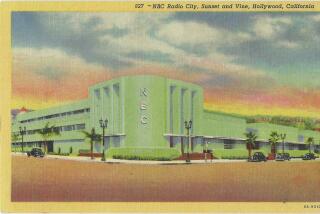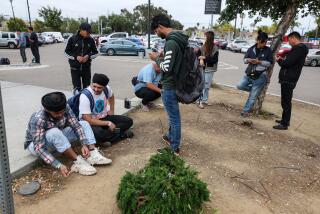Area Code Overlay Is Pushing Buttons
Krysten Robertson is in area-code denial -- and she’s not alone.
The Santa Monica resident’s personal and professional life are centered in the 310 area code. Like others who call the Westside and South Bay home, she has little more than two weeks before callers are required to dial 1 plus the area code before a number, even for calls within the 310 boundaries.
For Robertson, 28, that means reprogramming scores of numbers on her cellphone and work line. Her dentist, her bank, her tax preparer, her credit union, even her local pizza joint.
“I just never really thought about how much of an inconvenience it’s going to be,” said Robertson, who’s not sure if she’ll bother reentering the numbers or just wait until she gets a new phone and start over.
After years of debate and delays, residents of the 310 will no longer be able to dial just seven digits to make local calls starting July 26. That milestone will be followed a month later with the overlay of the 424 area code. With 310 numbers being depleted, phone companies are set to begin distributing 424 numbers to new customers on Aug. 26.
The 310 zone is the first in California to get an overlay. Typically, regulators simply split areas when numbers begin to run out. But neither the Westside nor the South Bay wanted to give up the vaunted 310. State regulators approved the overlay last year, allowing existing phone customers to keep their 310 numbers.
If the 310-424 switch proves successful, overlays could be applied in other California area codes running out of numbers, including the 714 in Orange County, the 408 in San Jose and the 818 in the San Fernando Valley.
Still, some of the more than 1 million people living in the 310 said they don’t like the idea of being area-code guinea pigs.
“It’s a nightmare,” said Mel Honl, a Torrance resident and business owner. His job keeps him on the phone nine hours a day. Honl expects to have to reprogram nearly 100 numbers with the 310 area code.
He said he plans to start later this week.
But some believe inconvenience is not the worst consequence. They fear that “automatic dialers” -- used in apartment gates, elevators, alarm and security systems -- could be rendered useless if the settings are not modified.
“We’re telling people, ‘It’s coming, it’s coming. Are you ready?’ ” said Marna Smeltzer, president and chief executive of the Redondo Beach Chamber of Commerce. “But my concern is that a lot of people, it’s just not on their radar screen.... If they don’t change them and put the 1-310 in, they’re not going to work.”
Smeltzer was one of many South Bay locals who for years fought to keep the 310, making it a volatile political issue from Santa Monica to the Palos Verdes Peninsula.
Activists in Santa Monica -- led by a plastic surgeon and a local newspaper columnist -- beat back an area code change, contending that the 310 number shortage was not as severe as the phone industry claimed.
The 310 covers an affluent coastal region whose numbers have been swallowed up in the last decade by cellphones, credit-card scanners and ATMs, phone companies have said. Just as the 818 has long signified Valley suburbia and the Inland Empire’s 909 is thought of by some as a synonym for the boondocks, the 310 is associated with beach-side living and wealth.
That’s one reason some residents have fought to keep their area code.
But state regulators are concerned by the dwindling cache of numbers. The Public Utilities Commission said this week that about 1.88 million 310 numbers remain available, slightly down from 1.97 million last year. At least 5.3 million numbers were in use or unavailable as of June 2005.
Still, some longtime critics question whether a new area code is needed.
“All of our personal habits are changing because technology is changing, and that’s going to free up more and more numbers,” said Redondo Beach City Councilman John Parsons, pointing to the declining use of pagers, land lines and fax machines and the rise of high-speed Internet.
Verizon and Cingular sent letters to customers warning of the overlay and the new dialing procedure, and some phone companies were required to update their telephone directories. But local officials still worry that many residents are in the dark.
“Nobody’s prepared,” said Manhattan Beach City Councilman Jim Aldinger. In discussions about reprogramming phones, Aldinger said, “everybody I talk to goes, ‘What? Why would I do that?’ ”
Local law enforcement agencies said they have adjusted their phones for the change. But it’s up to individual apartment owners, security firms and building managers to fix private lines.
Steven Diels, who owns a telephone answering and dispatch service in Redondo Beach, has been reminding his clients -- including doctors, churches, law firms and alarm companies -- of the coming switch. But he won’t know until July 26 how many people heeded his warning.
Teri Meyer, 39, is prepared.
Over the past month, the Santa Monica native has gradually been reprogramming her cellphone to include the area code. She did it whenever she had spare time -- while watching her 2 1/2 -year-old daughter at the park, waiting for doctor appointments and spending time at her mother’s. Meyer estimated it took about an hour. “It’s done, it’s over with, and now it’s time to move on,” Meyer said.
Mark Bregel, 51, said that as area codes have proliferated throughout Southern California in the last decade, he’s gotten used to always dialing the code before each number.
“It’s going to be, whether you like it or not,” he said of the area code changes, as he sipped on a juice smoothie near the Third Street Promenade in Santa Monica.
But the Pacific Palisades resident will have to change another habit: When asked for his number, he automatically recites seven digits.
“I never have to say my area code to people I talk to,” Bregel said. “But I am going to have to do it soon.”
*
(BEGIN TEXT OF INFOBOX)
Making the call
What happens on July 26?
All callers in the 310 area must dial 1 plus the area code and the seven-digit telephone number when making a local call.
What is the area code overlay?
State regulators say the 310 is running out of numbers. So on Aug. 26, phone companies will start issuing 424 area code numbers for most new customers. Existing phone lines will keep the 310 area code.
What happens if I don’t dial the area code for local calls?
Callers will hear a recording telling them to hang up and redial using the correct number of digits.
Will I need to use an area code for special phone services?
No. People can still just dial three digits for 911, 411 and 311.
Will the change increase the cost of calls?
No. Regulators say dialing the area code won’t change the cost of calls.
Are more overlays planned?
This is the state’s first area code overlay. But if it proves successful, overlays could be considered elsewhere in California, perhaps in the San Fernando Valley, San Jose and San Francisco.
Where can I get more information?
The Public Utilities Commission has produced a website to address overlay issues: https://www.cpuc.ca.gov/static/telco/reports/area+code+info/ac310pubmt gs/index.htm.
Sources: California Public Utilities Commission
More to Read
Sign up for Essential California
The most important California stories and recommendations in your inbox every morning.
You may occasionally receive promotional content from the Los Angeles Times.










